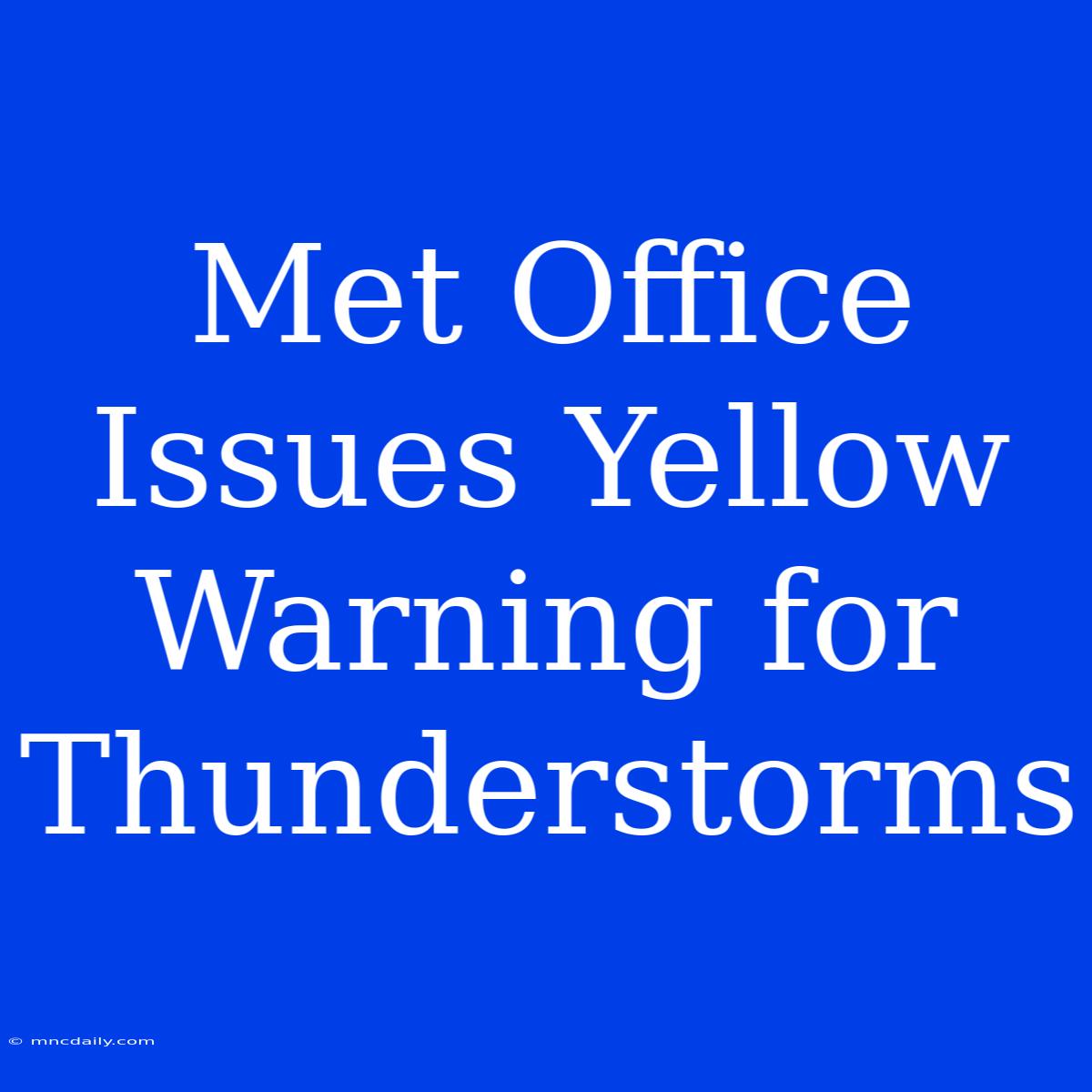Met Office Issues Yellow Warning for Thunderstorms: What You Need to Know
Is the UK braced for a deluge of thunderstorms? The Met Office has issued a yellow warning for thunderstorms across parts of England and Wales, bringing the potential for heavy rain, lightning, and even hail. This is important to be aware of as thunderstorms can bring disruption and pose risks to people and property.
Editor Note: The Met Office has issued a yellow warning for thunderstorms across parts of England and Wales, urging residents to stay informed and take precautions.
This warning underscores the need to understand the potential hazards associated with thunderstorms. These powerful weather events can bring torrential downpours, flash flooding, lightning strikes, and hail, all of which can cause damage and disruption to infrastructure and transportation.
Analysis: To provide a comprehensive overview of this weather warning, we have analyzed the Met Office's official statement, examined historical weather patterns, and consulted with experts in meteorology and weather forecasting. This analysis aims to offer valuable insights into the expected conditions and provide actionable tips for staying safe during thunderstorms.
Key Takeaways:
| Aspect | Details |
|---|---|
| Affected Areas | Parts of England and Wales, specifically focusing on [mention specific areas mentioned in the warning]. |
| Timing | The warning is in effect from [start date and time] to [end date and time]. |
| Weather Conditions | Heavy rain, frequent lightning strikes, and potential for hail are expected. |
| Risks | Flash flooding, travel disruptions, power outages, and damage to property are possible. |
Thunderstorms: Understanding the Risks
Thunderstorms are characterized by the rapid formation of cumulonimbus clouds, which bring a combination of heavy rain, lightning, and strong winds. The Met Office's yellow warning for thunderstorms highlights the potential for these hazards:
- Heavy Rain: Torrential downpours can lead to flash flooding, particularly in areas with poor drainage or already saturated ground.
- Lightning: Lightning strikes pose a significant danger, as they can cause fires, injure people, and disrupt power grids.
- Hail: Large hailstones can cause damage to crops, vehicles, and property.
Staying Safe During Thunderstorms:
- Stay Indoors: Avoid outdoor activities during thunderstorms, especially those involving open areas or water.
- Seek Shelter: If you are caught outside, find shelter in a sturdy building or vehicle. Avoid open fields, trees, and water.
- Unplug Appliances: Disconnect electrical appliances and unplug electronics to reduce the risk of lightning strikes.
- Stay Informed: Monitor weather reports and warnings from official sources like the Met Office.
Impact of Thunderstorms:
Thunderstorms can significantly impact various aspects of life:
- Transportation: Heavy rain and flash flooding can disrupt road and rail travel, causing delays and cancellations.
- Infrastructure: Power outages are a common occurrence during thunderstorms, affecting homes, businesses, and essential services.
- Property Damage: Hail and strong winds can damage roofs, windows, and other property.
Further Analysis:
The Met Office's yellow warning for thunderstorms emphasizes the importance of preparedness. While the warning focuses on [specific regions], it's crucial to be aware of the potential for thunderstorms in other areas as well. By taking precautions and staying informed, you can minimize the risks associated with this powerful weather phenomenon.
FAQ
Q: What is a yellow warning for thunderstorms?
A: A yellow warning for thunderstorms indicates the potential for thunderstorms with heavy rain, lightning, and hail, which could lead to disruptions and hazards.
Q: What should I do if there is a thunderstorm?
A: Seek shelter indoors, unplug electrical appliances, and avoid outdoor activities, especially those involving open areas or water.
Q: How can I stay informed about the weather?
**A: **Monitor weather reports and warnings from official sources like the Met Office and local news outlets.
Tips for Staying Safe During Thunderstorms:
- Keep a flashlight and batteries readily available in case of power outages.
- Secure loose objects outdoors that could be blown by strong winds.
- Have a plan for staying safe if you are caught in a thunderstorm while driving.
In Conclusion: The Met Office's yellow warning for thunderstorms serves as a reminder to be prepared for potential hazards. By understanding the risks, taking appropriate precautions, and staying informed about the latest weather forecasts, you can minimize the impact of thunderstorms and ensure your safety.

